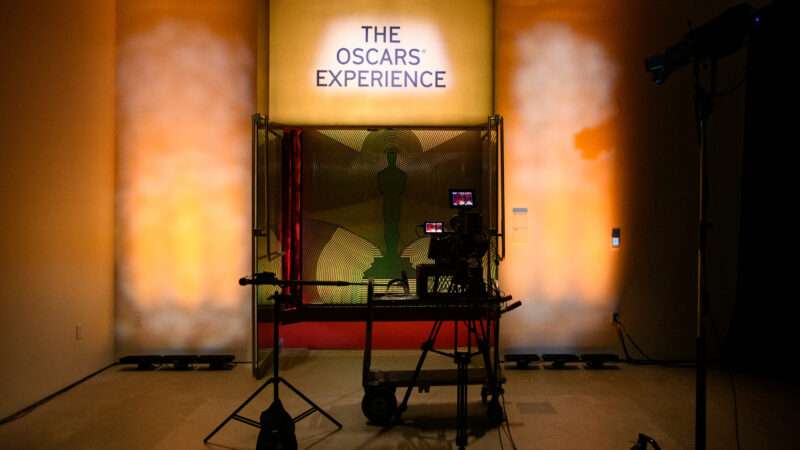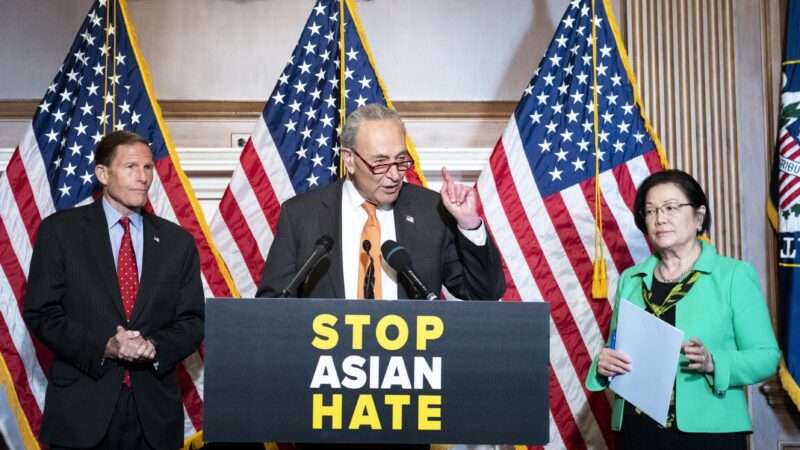Yesterday, the Supreme Court decided Jones v. Mississippi. The question presented was “Whether the Eighth Amendment requires the sentencing authority to make a finding that a juvenile is permanently incorrigible before imposing a sentence of life without parole.” The key word here is “incorrigible.” In other words, is the juvenile incapable of being reformed? The 5-4 Court answered this question no. Justice Kavanaugh wrote the majority opinion. He concluded that two recent precedents, Montgomery v. Louisiana (2016) and Miller v. Alabama (2012), do not require a finding of incorrigibility. Justice Sotomayor dissented, and was joined by Justices Breyer and Kagan. The dissenters argued that Montgomery and Miller did impose a finding of incorrigibility. Justice Thomas concurred in judgment, and would have overruled Montgomery.
I am not interested in debating whether the majority or dissent accurately read Montgomery. As a general matter, I presume any Justice Kennedy 5-4 decision is on the chopping blocks. The Court will either limit the precedent to its facts, or stealthily overrule it. My goal here is different. Why did Montgomery even make a reference to incorrigibility? None of the parties briefed that issue. It only came up briefly during oral argument. How did that phrase became the basis for a followup Supreme Court case? Here, I think a time bomb was planted in 2012 that fizzled out.
Let’s start at the beginning. In 2012, the Court split 5-4 in Miller v. Alabama. Justice Kagan wrote the majority opinion. She concluded that the Eighth Amendment bars a sentence of mandatory life in prison without the possibility of parole for juvenile homicide offenders. The case only had one reference to “incorrigibility.” Justice Kagan wrote:
Roper and Graham emphasized that the distinctive attributes of youth diminish the penological justifications for imposing the harshest sentences on juvenile offenders, even when they commit terrible crimes. . . . Similarly, incapacitation could not support the life-without-parole sentence in Graham: Deciding that a “juvenile offender forever will be a danger to society” would require “mak[ing] a judgment that [he] is incorrigible”—but ” ‘incorrigibility is inconsistent with youth.’ ” 560 U. S., at ___ (slip op., at 22) (quoting Workman v. Commonwealth, 429 S. W. 2d 374, 378 (Ky. App. 1968)).
Graham held that the Eighth Amendment does not permit life without parole for nonhomicide crimes. Miller, which concerned mandatory LWOP for homicide crimes, cited Graham’s discussion of incorrigibility. But incorrigibility was in no way essential to the holding of Miller.
Fast-forward four years. Justice Kennedy wrote the majority opinion in Montgomery v. Louisiana (2016). This case held that the rule in Miller was retroactive. Once again, incorrigibility played no role in the litigation. I searched all of the briefs. None of the parties mentioned the word “incorrigible” or “incorrigibility.” Four amicus briefs briefly referenced incorrigibility: ABA, ACLU, Equal justice Initiative, and the Charles Hamilton Houston Institute. But none of these briefs suggested that a finding of incorrigibility should be required to sentence a juvenile defendant to LWOP. Rather, each citation merely quoted from Justice Kagan’s Miller opinion.
During oral argument, only one Justice referenced incorrigibility. You guessed it. It was Justice Kagan. She invoked this concept in an exchange with then-Louisiana SG, and now-Judge Kyle Duncan.
JUSTICE KAGAN: There — there is — there is a process component of Miller, no question about it, where the Court says what courts are supposed to look at is — are the characteristics of youth and are supposed to try to figure out whether these terrible crimes are functions, in part, of immaturity or — or — or not, whether you — you really are looking at an incorrigible defendant. So there is that process component.
The majority opinion in Montgomery had two references to incorrigibility. These references provided the basis for the question presented in Jones v. Mississippi. Here is the first passage:
Louisiana suggests that Miller cannot have made a constitutional distinction between children whose crimes reflect transient immaturity and those whose crimes reflect irreparable corruption because Miller did not require trial courts to make a finding of fact regarding a child’s incorrigibility. That this finding is not required, however, speaks only to the degree of procedure Miller mandated in order to implement its substantive guarantee. When a new substantive rule of constitutional law is established, this Court is careful to limit the scope of any attendant procedural requirement to avoid intruding more than necessary upon the States’ sovereign administration of their criminal justice systems.
This carefully crafted sentence is quite unclear. It can be read in one of two ways. First, Miller “did not require trial courts to make a finding of fact regarding a child’s incorrigibility.” Justice Kavanaugh adopted this reading. Second, the Miller Court did not require the sentencing court in that case to make this finding because of the unique posture of Miller–that is, “in order to implement its substantive guarantee.” But this requirement should be understood as part of the rule in Miller going forward. Justice Sotomayor adopted this latter reading. Again, I am not concerned with whether the majority or dissent is correct. My concern is different. Why was this sentence from Montgomery written in such a strange fashion:
Louisiana suggests that Miller cannot have made a constitutional distinction between children whose crimes reflect transient immaturity and those whose crimes reflect irreparable corruption because Miller did not require trial courts to make a finding of fact regarding a child’s incorrigibility.
Of course Miller imposed no such requirement. Yet this sentence was written. Why? My theory: to allow a future Court to adopt what would become Justice Sotomayor’s reading of Montgomery and Miller.
Montgomery made one other reference to incorrigibility:
Miller, it is true, did not bar a punishment for all juvenile offenders, as the Court did in Roper or Graham. Miller did bar life without parole, however, for all but the rarest of juvenile offenders, those whose crimes reflect permanent incorrigibility. For that reason, Miller is no less substantive than are Roper and Graham.
Again, I do not think this statement is a fair reading of Miller. Miller did reference Graham, but did not adopt incorrigibility as part of the test. Still, the sentence is written vaguely enough to be understood in different ways.
In his concurrence, Justice Thomas refers to Montgomery‘s reading of Miller as “Janus-faced”
In a similar Janus-faced demonstration, Montgomery reiterated Miller‘s assurance that “trial courts [need not] make a finding of fact regarding a child’s incorrigibility,” yet decided that “Miller drew a line between children whose crimes reflect transient immaturity and those rare children whose crimes reflect irreparable corruption.”577 U. S., at 209–211.2 These statements cannot be reconciled.
My tentative conclusion is that this “incorrigibility” language was a time bomb. Professor Rick Hasen explains that a “Time bombs exist when Justices include within a case subtle dicta or analysis not necessary to decide it with an eye toward influencing how the Court will decide a future case.”
Let’s roll the clock back a decade. At the time, those seeking to abolish juvenile LWOP had as strategy. Indeed, the progression of the LWOP cases was predictable. First, hold that mandatory LWOP cannot be applied to non-homicide juvenile crimes. (Graham in 2010). Second, hold that mandatory LWOP cannot be applied to juvenile crimes at all. (Miller in 2012). Third, hold that mandatory LWOP rule is retroactive. (Montgomery in 2016). Fourth, make it even harder for courts to impose LWOP as a matter of discretion. The precise contours of Stage 4 were negotiable. The abolitionists are predictable–at least while Justice Kennedy was the 5th vote. Way back in 2012, it would have been clear what stage 4 would be. We now know that the progressives would never get to stage 4 because the composition of the Court changed. But that fact wasn’t known in January 2016 when Montgomery was decided.
Flash back to Miller (2012). I think the language about incorrigibility was inserted as a time bomb for stage 4. And in Montgomery (2016), a very strange sentence was written about incorrigibility, even though none of the parties briefed the issue. Again, that sentence was to set up the stage 4 end game. Alas, that end game was snapped out of existence when Justice Kennedy retired. Or, to quote Justice Sotomayor, “half of [Miller‘s] reasoning” was blipped. Thanos. Now, the new Roberts Court can simply adopt the reading of that sentence that is consistent with precedent.
Who planted the time bomb? RBG was notorious for burying those devices, like in CLS v. Martinez. But here my money is on Justice Kagan. She wrote Miller. She brought up incorrigibility during oral arguments in Montgomery. It is entirely plausible that during the drafting process, Justice Kagan nudged Justice Kennedy to include the incorrigibility analysis as a setup for the end game. Justice Brennan was the master of time bombs. And I often compare Kagan to Brennan. When I read that strangely crafted sentence, I see Justice Brennan wrangling over the language with an eye to the future. Alas, the Montgomery time bomb fizzled out when the fifth finger vanished.
Of course, this entire post is mere speculation. Fun speculation. But speculation.
from Latest – Reason.com https://ift.tt/3xhAifb
via IFTTT


